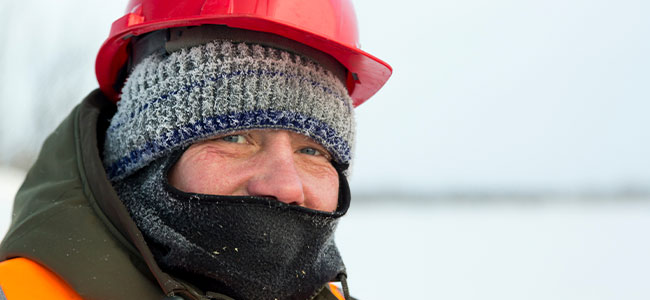
Page 2 of 2
Training Employees to Handle Extreme Cold
Communication of these policies is just as important as their content. Clear dialogue ensures employees understand what to do and how to stay safe. Use multiple channels — like meetings, emails, training sessions and visible signage — to disseminate this information.
Effective communication is also a motivational tool. Well-informed employees know exactly what to do in an emergency, encouraging them to adhere to safety practices and look out for their and their colleagues’ well-being.
Lastly, it is vital to keep these policies dynamic. Regularly review and update them based on the latest weather trends, technological advancements and feedback. This approach ensures that policies remain relevant and practical, further enhancing the safety and productivity of the workplace in icy conditions.
Providing the Right Gear and Resources
In extreme cold conditions, the proper clothing and equipment ensure workers’ safety and comfort. It is critical to have layered clothing in these situations so that staff can adjust their attire according to the activity level and weather changes.
Insulated gloves that balance warmth with dexterity are crucial, especially for tasks requiring fine motor skills. Head and face protection are also imperative. Hats should cover the ears, and face masks or balaclavas should fit comfortably without hindering vision or hearing.
Remember, water conducts heat away from the body four times faster than air. So waterproofing is vital to prevent heat loss. Eye protection like goggles is also necessary in specific environments to guard against wind and glare.
The quality and appropriateness of this gear for specific job roles are paramount. For instance, gloves suitable for a worker handling delicate tools differ from those necessary for operating machinery.
Beyond personal gear, workplaces should provide accessible warm-up areas for employees to take breaks and raise their body temperature, which is crucial in preventing cold-related health issues. Emergency supplies should also be readily available, including first aid kits tailored for cold weather, extra warm clothing, facilities for making hot drinks or other warming devices.
Essential Cold Weather Training for Employees
Training topics for staff working in extreme cold should include recognizing the signs of hypothermia and frostbite. Emphasize how to identify frostnip, the earliest stage of frostbite that causes numbness and inflamed or discolored skin. Team members should also learn the proper use of protective clothing, ensuring they understand how to layer effectively and select appropriate gear for different conditions.
Additionally, training should cover safe work practices in cold environments, such as the importance of taking regular breaks in warm areas and staying hydrated. These training sessions must be interactive and engaging, using real-life scenarios and hands-on activities to help employees internalize the information. Regular refresher courses are essential to keep these crucial safety practices fresh and top of mind, ensuring ongoing awareness and adherence to safety protocols in frigid working conditions.
Staying Ahead in Cold Weather Safety Management
A proactive approach to safety in extreme cold conditions is essential for any responsible organization. It includes staying abreast of and integrating technological advancements that enhance security and comfort in cold conditions. By doing so, they ensure compliance with wellness standards and demonstrate a commitment to the well-being of their workforce.
About the Author
Jane Marsh is the Editor-in-Chief of Environment.co.